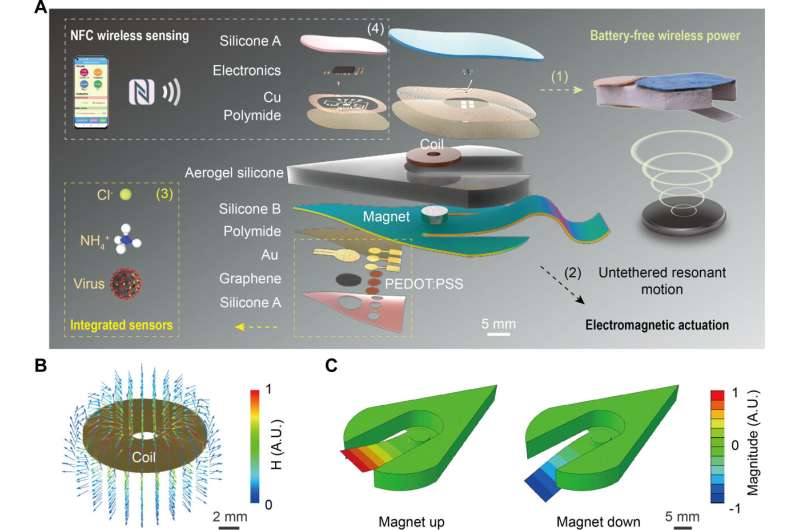January 22, 2024 report
This article has been reviewed according to Science X's editorial process and policies. Editors have highlighted the following attributes while ensuring the content's credibility:
fact-checked
peer-reviewed publication
trusted source
proofread
A soft swimming robot without wires or batteries that can test for contaminants

A team of biomedical engineers and roboticists affiliated with multiple institutions across China has developed a type of small, soft robot that can swim through water and test for contaminants. In their paper published in the journal Science Advances, the team notes that the robot can be powered and controlled using radio waves.
Sending a robot into water-carrying pipes to test for pollutants could be helpful for city managers. Unfortunately, such robots are not available, leaving gaps in testing—though one team came close back in 2022 with the development of a twisted soft robot that could navigate mazes without human or computer guidance.
In this new study, the team in China developed a soft robot that can be placed into a water source and propelled and steered using the energy in radio waves. For now, they are calling it a miniaturized soft electromagnetic swimmer (SES).
The SES is shaped like an arrowhead with a notch cut in the back—the engineers placed a tail in the notch that moves in a similar fashion to a dolphin tail, courtesy of an embedded magnet and coil antenna, allowing for propulsion. The tail is activated by taking advantage of the energy in radio waves.
The robot was also fitted with three sensors, one that could test for and measure chloride levels in the water around it, another that does the same for ammonia, and yet another that can test for the presence of the SARS-CoV-2 virus. The robot also has a chip for processing information from the sensors and sending signals to a nearby smartphone—the team also developed software that graphically displays the data from the sensors.
Testing of the device in a lab environment showed it worked well when propelled through small, water-filled pipes. The researchers note that in its current form, the robot would only be useful in small, short-distance applications—the robot cannot venture any farther than 4 cm from the radio wave source and 10 cm from the smartphone receiving data transmissions. They plan to continue working on their robot to find ways it can be used in more remote settings.
More information: Dengfeng Li et al, Battery-free, wireless, and electricity-driven soft swimmer for water quality and virus monitoring, Science Advances (2024). DOI: 10.1126/sciadv.adk6301
© 2024 Science X Network


















